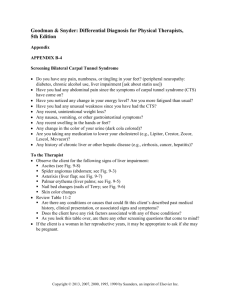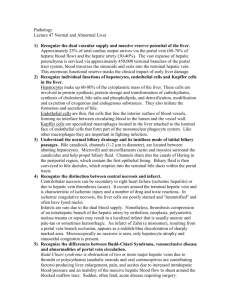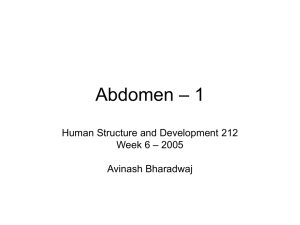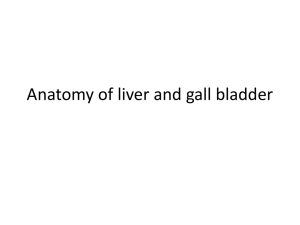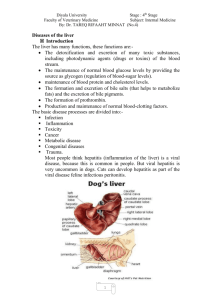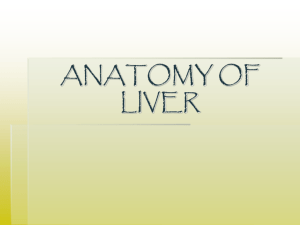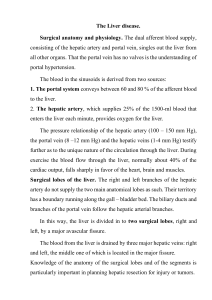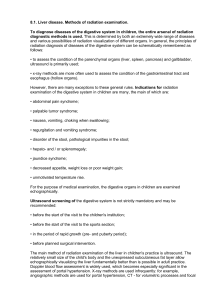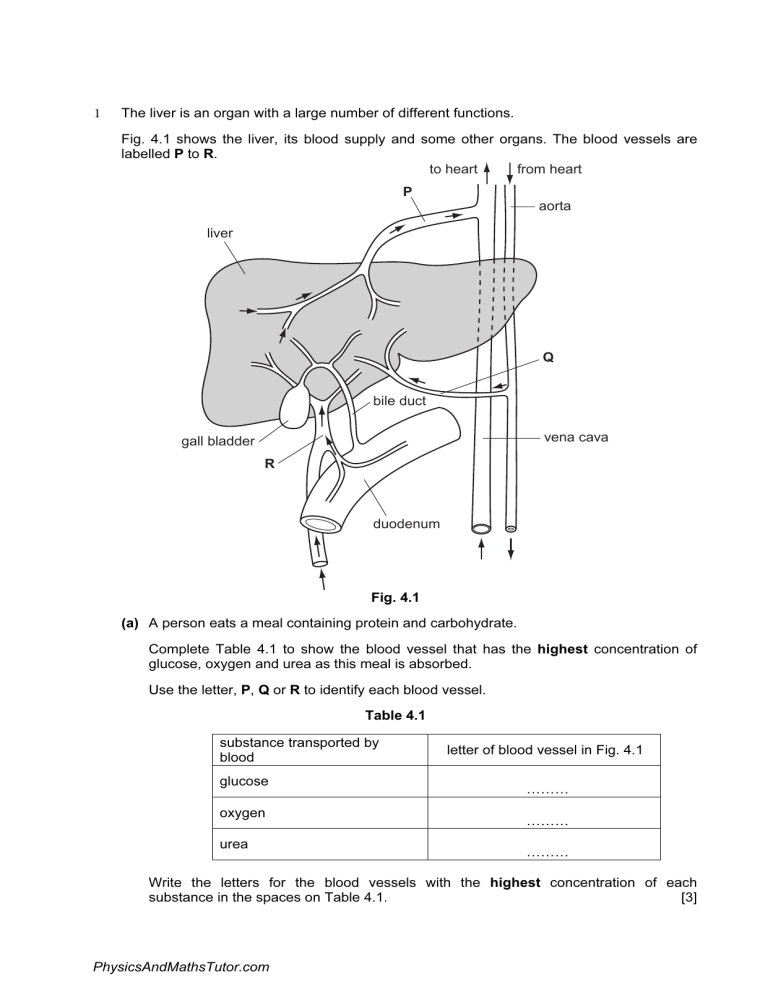
1 The liver is an organ with a large number of different functions. Fig. 4.1 shows the liver, its blood supply and some other organs. The blood vessels are labelled P to R. to heart from heart P aorta liver Q bile duct vena cava gall bladder R duodenum Fig. 4.1 (a) A person eats a meal containing protein and carbohydrate. Complete Table 4.1 to show the blood vessel that has the highest concentration of glucose, oxygen and urea as this meal is absorbed. Use the letter, P, Q or R to identify each blood vessel. Table 4.1 substance transported by blood glucose oxygen urea letter of blood vessel in Fig. 4.1 ……… ……… ……… Write the letters for the blood vessels with the highest concentration of each substance in the spaces on Table 4.1. [3] PhysicsAndMathsTutor.com (b) Amino acids are absorbed from the small intestine and transported to the liver. Describe how the liver is involved in the metabolism of amino acids. [3] (c) Describe the effects on the liver of the following. (i) insulin released from the pancreas [2] (ii) adrenaline released from the adrenal glands [2] (iii) excessive long-term consumption of alcohol [2] PhysicsAndMathsTutor.com (d) Cholesterol can accumulate in the gall bladder to form gall stones. These gall stones may stop bile flowing from the liver through the bile duct and into the duodenum. Explain the possible effect of gall stones on the digestion of fat. [4] [Total: 16] PhysicsAndMathsTutor.com 2 Blood flows through the hepatic portal vein from some organs to the liver. Fig. 2.1 shows the hepatic portal vein and these organs. liver spleen hepatic portal vein Fig. 2.1 (a) Blood in the hepatic portal vein is deoxygenated. Explain why the blood in the hepatic portal vein is deoxygenated rather than oxygenated. [2] PhysicsAndMathsTutor.com (b) Name four organs, other than the spleen, that are shown in Fig. 2.1 and from which blood flows into the hepatic portal vein. 1 2 3 4 [4] (c) Describe the role of the hepatic portal vein in the transport of absorbed nutrients. [3] (d) Explain how the liver is involved in regulating the composition of the blood and in protecting the body against toxic substances. [5] PhysicsAndMathsTutor.com (e) The spleen contains lymphatic tissue which is full of phagocytes and lymphocytes. Describe how phagocytes and lymphocytes protect the body against the spread of disease-causing organisms. phagocytes lymphocytes [4] [Total: 18] PhysicsAndMathsTutor.com 3 Heart surgeons may stop the heart beating during operations. While this happens blood is pumped through a heart-lung machine that oxygenates the blood. Fig. 1.1 is a diagram showing a heart-lung machine in use. E oxygenated blood returned to body F oxygenator pump A B C reservoir of deoxygenated blood removed from body drainage tubes left ventricle D Fig. 1.1 (a) Name the structures labelled A to D. A B C D [4] (b) Name the blood vessels E and F. E F PhysicsAndMathsTutor.com [2] (c) The heart-lung machine is used so that surgeons can operate on the arteries supplying heart muscle. These arteries may be diseased. Name these arteries and explain how they may become diseased. name of arteries explanation [3] (d) Suggest why a patient is put on a heart-lung machine during such an operation. [2] Humans have a double circulation system. There is a low pressure circulation and a high pressure circulation. (e) Explain how the structure of the heart enables it to pump blood into two circulations at different pressures. [4] [Total: 15] PhysicsAndMathsTutor.com
